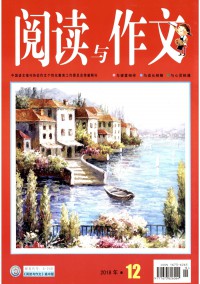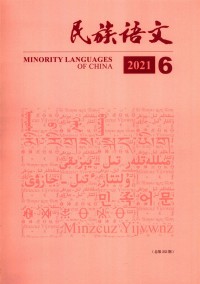古语翻译
前言:想要写出一篇令人眼前一亮的文章吗?我们特意为您整理了5篇古语翻译范文,相信会为您的写作带来帮助,发现更多的写作思路和灵感。

古语翻译范文第1篇
[KeyWords]idioms;allusion;translationmethods
【摘要】习语是指那些经受了历史的长期考验,千锤百炼而形成的固定词组。为了忠于原文,习语翻译既要保持源语的原汁原味,也要符合译入语语言文字的需求。尤其在翻译习语中的神话典故时更应注意以下三点1.译入语结构的平衡2.译出源语的民族特色和地域色彩3.尽可能保留源语的形象。因为英语习语吸收了众多来自古希腊,古罗马,北欧古代神话等欧洲各民族的文化精髓,所以在体现语言的文化差异方面,习语比其他语言成分更具有典型性和代表性。基本的英语翻译方法有归化和异化,具体体现如下:直译法,意译法,借用法,直译加注。在当前文化全球化的时代背景下,各民族间的文化相互渗透和融合的趋势愈来愈强。人们对于外来文化、异国情调的包容、接纳以至欣赏能力也日渐提高。因此,作者认为只要在不影响译语读者理解的前提下,应提倡尽量以文化直入模式进行习语翻译,以促进世界文化的交流与融合。
【关键词】习语;神话典故;翻译方法
1.Introduction
WhenopeningOxfordAdvancedLearner’sDictionaryofCurrentEnglish,onecanseesuchanentry:“Idiom(n.)Phraseorsentencewhosemeaningisnotclearfromthemeaningofitsindividualwordsandwhichmustbelearntasawholeunit.”[1]AndEnglishtranslationtheoreticianPeterNewmarkalsosaid:“Anidiomisacurrentandfrequentlyusedgroupofwordswhosemeaningisnotclearfromthecommonmeaningsofitsconstituentwords”.[2]Inbrief,idiomsarefixedphrasesthatgothroughthetestofhistoryandcannotbeseparated.Sothewholemeaningusuallycannotbesurmisedintranslationandthecomponentsmustnotbeseparatedatone’sease.
2.Background
Englishasaninternationallanguage,itsusageiswide-ranging.ManycountrieschooseEnglishastheirofficiallanguage.Whatismore,sixtypercentofbroadcastingintheworlduseEnglishtopropagatetheirinformation.Ofcourse,therearemanyidiomsinEnglishandpartsofthemareloanwords.ThefeaturesofassimilatingloanwordsinEnglishareevident.Ontheonehand,itbelongstoGermaniclanguagefamilythatenablesittotakepossessionofthecommonwordsinGermaniclanguage.Ontheotherhand,EnglishkeepsintouchwithFrenchandRomanlanguagefamilycloselyforalongtime.TheancientGreekmythologies,RomanmythsandfairytalesofnorthernEuropearethepubliclyownedwealthofEuropeannations.TheyhavedeepinfluenceondevelopmentofwholeEuropeancultureinwhichmanystoriesprovidesourcematerialsforEnglishidioms.Therefore,EnglishidiomstakeinanywordthatcanrepresentthemainEuropeanculture.Anditismoretypicalandrepresentativethanothersinreflectingtheculturaldiversity.JustlikeBaconsaid:Talent,quick-wittedandspiritinanationcanallbefoundinitsidioms.[3]
2.1ThesourcesofEnglishidioms
Aseveryoneknows,idiomscomefromdifferentaspects:differentlivingenvironments;everydaylife;religion;historicalevents;literaryworksandmythologyandallusion.
2.1.1Idiomsfromdifferentlivingenvironments
Idiomsarecloselyrelatedtopeople’slaborandlife,becausepeopleinaparticularcultureneedwordstonameandexplainobjectsandappearancepresentinthatculture.TheHanPeople,liveonland,andbelongtoanagrariansocietythatplacesagriculturalproductionatthetopofthenationalagenda.Duringthelonghistoryoffarming,theChineselanguagehasaccumulatedlargenumbersoffarmers’idiomslike瑞雪兆丰年(atimesnowpromisesagoodharvest),五谷丰登(abundantharvestofallfoodcrops).WhileBritishliveinanislandcountry,probablyhaveidiomsaboutwaterandsailing.Forexample,wespeak挥金如土inChinese,butweshouldrenderitintoEnglishas“spendmoneylikewater”.Andtherearesimilarexamplesasfollows:“tokeepone’sheadaboutwater”(奋力图存),“infullsail”(全力以赴),“towerone’ssail”(甘拜下风).
Whatismore,therecomedifferentspecialproductsdeterminedbythedifferentgeographicalsurroundings.Forexample,“likemushrooms”and“springuplikemushrooms”inEnglish,means像蘑菇一样,and雨后春笋般地涌现inChinese.Bothofthemhavethesamemeaningofthegreatdevelopmentofathing,buttheyusetheirrespectivethingstoformthemetaphor,becauseChinaaboundswithbamboo,whereasitdoesnotgrowinEngland.SotheChinesepeoplearequitefamiliarwithbamboo;whiletheEnglishdon’t.Thiscaseisquitethesamewiththeidiom“plentiful
asblackberries”,forblackberriesareeasilyavailableinEnglandwhileinChinese,多如牛毛isused,forcattlecanbefoundeverywhereinChina.
2.1.2Idiomsfromeverydaylife
Entertainmentandactivities,whicharepartsofnationalculture,arequitedifferentinvariouscountries.Horseracing,boxingandcricketareancientandtraditionalsportsinEngland,soinEnglish,thereareidiomslike“neckandneck”(不分上下),“downandout”(倒下出局),“notcricket”(不讲信用),and“straightfromtheshoulder”(直截了当),and“haveagoodinnings”(一帆风顺);whereastheancientChinesepreferredhuntingandchess:棋逢对手(diamondcutdiamond),剑拔弩张(atdaggersdrawn),明枪易躲,暗箭难防(Falsefriendsareworsethanopenenemies).Therearesomeaspectsineverydaylifeinthefollowing.
(ⅰ)Idiomsfromfood
InEngland,breadisusuallyeatentogetherwithbutter,andsalt,milkandcreamaretheireverydaydiet.Allofthemaretheeverydaydietforwesternpeopleandthusappear“Thereisnousecryingoverspiltmilk”(不要做无谓的后悔),“baker’sdozen”(面包师的第十三个面包),and“polishtheapple”(拍马屁);ChinahasalonghistoryofcookingandtheChineseareknownasthemostcritical,forwhoattachgreaterimportancetofoodthananyotherpeople,asisreflectedinthesayinglike:画饼充饥(todrawcakestoallayhunger)
(ⅱ)Idiomsfromsea
BothintheChineseandtheEnglishlanguages,idiomsabouttheseaarenumerous,becausebothofthesetwocountriesaresurroundedandhalf-surroundedbysea,andtheyarerichinnaturalresourcesoffish.Fishingplaysavitalroleintheireconomy,soalargenumberofidiomsconcerningfisharehandeddown:“Fishbeginstostinkatthehead”(上梁不正下梁歪),“Neveroffertoteachfishtoswim”(不要班门弄斧),and“tofishintroubledwater”(浑水摸鱼).
(ⅲ)Idiomsfrommilitaryaffairs
Thehistoryofmankindisalmostthehistoryofwar,whichisthesourceofnumerousidioms.TheChinesenationhasalonghistoryofwarformorethantwothousandyears,andthereforetheChineselanguageisrichinsuchidioms:项庄舞剑,意在沛公(XiangZhuangperformedthesworddanceasacoverforhisattemptonLiuBang’slife.---actwithahiddenmotive);四面楚歌(beindesperatestraits);暗度陈仓(tostealamarchon).AnditisalsomirroredinthefollowingEnglishidioms:“WhatmillionsdiedthatCaesarmightbegreat”(一将功成万骨枯);“Meetone’sWaterloo”(遭遇惨败);“Pyrrhicvictory”(得不偿失的胜利);andgentleman’sagreement(君子协定).
2.1.3Idiomsfromreligion
parativelyspeaking,BuddhismhasgreaterinfluenceinChineseculturealthoughChinaisamulti-religiouscountry.ItwasfirstintroducedintoChinainthefirstcenturyAD,andhasshapedtheChineselanguage,diet,arts,etc.,andgreatlystimulatedthedevelopmentofChineseliterature.ThelargenumberofwordsandidiomsderivedfromBuddhismisoneofthemanifestationsofitsinfluence,suchas放下屠刀,立地成佛(AbutcherbecomesaBuddhathemomenthedropshiscleaver---awrongdoerachievessalvationassoonashegivesupevil)and做一天和尚,撞一天钟(takeapassiveattitudetowardone’swork).AndtherearequiteafewEnglishidiomsfromreligion.Suchas:Benjamin’smess(最大的份额);
raiseCain(大吵大闹);appleofSodom(金玉其外,败絮其中);soptoCerberus(贿赂);handwritingonthewall(不祥之兆)andsoon.
2.1.4Idiomsfromhistoricalevents
Inmostlanguage,peopleembellishtheirspeechorwritingwithreferencestocharactersoreventsfromtheirhistory,thatistosay,idiomaticexpressionsarecloselyrelatedtoacountry’shistory.TherearealotofidiomsintheChineselanguagecannotfindanequivalentintheEnglishlanguagebecausethehistoryofthetwocountriesarequitedifferent.Manyidiomsarefromtheirownhistory.TheEnglishlanguagehasmuchlessidiomsfromhistoricaleventsthantheChineselanguagebecauseEnglishjusthasahistoryofmorethanonethousandyearsduringwhichlessimportanthistoricaleventshappened.Forexample,“tomeetone’sWaterloo”(遭遇滑铁卢)isfromthedefeatofNapoleonatWaterlooin1815,whichmeanstobecompletelydefeated.
2.1.5Idiomsfromliteraryworks
LiteraryworksarealsooneofthemainsourcesofEnglishidioms.InEnglishliterature,themostglitteringstarisShakespeare.Hisdramasarethemajorsourceofthiskindidioms:“toclaimone’spoundofflesh”(割某人的一磅肉)isfromTheMerchantofVenice;“makeassurancedoublysure”(加倍小心)comesfromMacbeth.Andthereareotherexamples:“Readingmakesafullman,conferenceareadyman,writinganexactman”---BaconOnStudy;“theuglyducking”(丑小鸭)isfromHanAnderson’stales;“JekyllandHyde”(双重性格)originatesfromStevenson’sTheStrangecaseofDr.JekyllandMr.Hyde;“opensesame”and“oldmanofthesea”comefromArabiantales.
2.1.6Idiomsfrommythologyandallusion
Inthisthesis,theauthorfocusesonthetranslationofmythologiesandallusionsinEnglishidioms,whichcomefromstoriesofGodsandheroes.Asweallknow,GreekandRomancivilizationshaveagreatinfluenceonEnglish,sotheGreekandRomancivilizationshavegreatinfluenceonEnglishidioms.Let’spayattentiontothefollowingidioms:
(1)“Achilles’heel”(致命弱点)whichcomesfromtheGreekmythologyhasthemeaning“theoneweakspotinaman’scircumstancesorcharacter”.InGreekepic,hismothertookAchillesupsidedownintotheStyxwhenhewasachild.Sohewasarms-proofexcepthisheelbecauseitwasheldinhismother’shand.ThereforeinTroywar,hediedforParisshotapoisonedarrowintohisheel.
(2)Otherexamples,“Hercules’schoice”means“therewardoftoilinreferencetopleasure”,“theHerculianefforts”(九牛二虎之力),and“thepillarsofHercules”(天涯海角).ItissaidthatHerculeswasoneofthemostfamousheroesinGreekmythologies.Hekilledtwosnakeswhenhewasababy,andwasknownasamanofmuscle.HerefusedthePleasureGoddess’sallure,wentthroughinnumerablehardshipsandintheend,hewontheeternallife.
Idiomshavebeencalledthecrystallizationoflanguage.Anappropriateuseoftheminourspeechandwritingwilladdtothestrengthandvividnessofidioms.Perhapssomepeoplearequitefamiliarwith“tocuttheGordianknot”and“APandora’sbox”suchallusionsnotonlymakethelanguagericher,butalsomakecommunicationmuchmorevividerandeasier.However,indailycommunication,peopleusuallydon’tknowwhy“Hobson’schoice”meansnochoiceatall(别无选择);“pilePeliononOssa”meansextremelydifficult(难上加难),or“Mercuryfig”meansthefirstfruit(最初的果实).Ifthesourceofanidiomisknown,itiseasiertofigureoutitsmeaning.Itis
difficulttotranslateidiomsfaithfullybecauseidiomsreflectthewisdomofordinarypeoplethatis
all-inclusive.Theknowledgeofthesourcesoftheseidiomswillhelpuscomprehendwhattheyreallymean.
2.2ThedifficultiesinthetranslationofEnglishidioms
Inthe1950’stheAmericanwriterHockettputforwardtheconcept“randomholesinpatterns”文化空缺whichmeans“theaccidentalgap”inconservationwhencontrastingtwolanguages.[4]AndNidahadsaid:Theremustbeinformationdrainsinanycourseofconservationandtheabsoluteequityisneverpossible.Thegoaloftranslationisconservationinmaximumtoenabletheforeignreadersunderstandthesourceculture.Therearetworeasonsasfollows.Firstly,theformationandsolidificationofEnglishidiomsareinrelationshipwiththedifferenthistories,environmentsandculturalbackgrounds.Itcontainscertainnationalculturecharacteristicsandinformation.Furthermore,ChineseandEnglishliveindifferentregions,sotheirlivingenvironmentsandexperiencesaredifferent,especiallyintheirwaystoobservetheworld,understandtheworldandtransformtheworld.Theircultureatmospheresareunique.Secondly,ChinesebelongstotheSino-TibetanlanguagefamilywhileEnglishbelongstotheIndo-Europeanlanguagefamily,sotheirlanguagestructuresaredifferent.Allmentionedaboveenrichtheidiomsandmakethemmorecomplex.
2.3Thedevelopmentoftranslationprinciple
TheprincipleoftranslationbetweenEnglishandChinesehasdevelopedforalongtime.Abouttranslationstandards,translatorsfromhomeandabroadputforwarddifferentopinions.FromYanFu’s“faithfulness,expressiveness,elegance”toMr.ZhangPeiji’s“faithfulnessandsmoothness”;fromFuLei’s“approximationinspirit”totheAmericanfamoustranslationtheoreticianEugeneNida’s“functionalequivalence”or“dynamicequivalence”,wemayseethatthesepositionsaffecteachother,supplementeachotheralthoughtheiremphasesaredifferent.Thefocusistotranslatethesourcetextfaithfully,meanwhile,tokeeptheoriginaltasteasmuchaspossible.
Thequalityofidiomstranslationhasthedirectinfluenceontheentirearticle.Inordertobeloyaltotheoriginaltext,thetranslationmustnotonlymaintainitsoriginaltasteandflavor,butalsoconformtothedemandofwritingintargetlanguage.However,theidiomstranslationisdifficulttomeetthesetwostandardsatthesametime.Itisextremelyimportanttotranslateidiomsfaithfully,andthetranslationbetweenEnglishandChinesemustpayattentiontofollowingthreepoints:
(ⅰ)Idiomsareheavilyculture-loaded;theyhavemanifesteddifferentnationalflavors.Therefore,thetranslationofidiomsmusttrytokeeptheoriginaltasteandnottousethosetargetwordsthathavestrongnationalcharacteristics.
(ⅱ)Chineseidiomsstresstotherhythmandstructure.SoitisnecessarytoaugmentorreadjusttheoriginallanguagestructurewhentranslatingEnglishidioms.
(ⅲ)Doone’sbesttotranslatetheoriginalimages,metaphoricmeaningandrhetoricofthesourcelanguage.
3.OntheTranslationMethodsofEnglishIdioms
3.1TwomaintranslationapproachesofEnglishidioms
Domesticationandforeignizationaretwomainapproachesoftranslation.TheUStranslationtheoreticianVenutidefinesthetwomethodsasfollow:[5]
Domesticationadoptsthenationalcenterprinciple,enablesthesourcelanguagetexttosatisfythevalueoftargetlanguageandculture,andleadsthesourcelanguagereadersintothetargetculture,whileforeignizationmeanstoacceptthedifferencesbetweenforeignlanguagecultureandtargetlanguageculturetotaketargetlanguagereaderstoseetheforeignscene.Fromthedefinitions,wecanseebothofthemholddifferentapproachestowardtheculturaldifferences.Buttheauthorbelievesthatthedomesticationisthebestwaytoenrichtheexpressionoftargetlanguage.Adoptingdomesticationinmaximumcanenablethetargetlanguagereadersemergethesameorthesimilarassociationasthesourcelanguagereaders.
3.2FourconcretetranslationskillsofEnglishidioms
TherearesomeconcreteskillsoftranslationbetweenEnglishandChinese,whicharecitedasfollows:
1.Literaltranslation
2.Freetranslation
3.Borrowing
4.Literaltranslationwithannotation
Theauthorrevealsthemethodsindetailinthefollowing.
3.2.1Literaltranslation
LiteraltranslationcanfairlyretaintheEnglishidioms’analogy;image;nationalandlocalflavors,inthepositionofnotviolatingthestandardoftranslationorcausingthereadersmisunderstand.Thiswayoftranslationcannotonlyretaintheoriginalintention,butalsoenrichChineselanguage.Itcanbeseenclearlyinthefollowingexamples:
(3)Anappleofdiscord(不和女神的金苹果)comesfromGreekmythology.Thestoryisabout:agoddessnameddiscordisangryandneverforgivesKingParisandhiswifebecausetheydon’tinvitehertoparticipateintheirweddingbanquet.Inordertogiveventtothehate,sheabandonsagoldenappleonthetableofweddingbanquet;declaringthatthisappleisgiventothemostbeautifulladyinthisweddingbanquet.Therearethreegoddesseswanttoobtainthisgoldenapple.Andthenitcauseswrangleinamess.Fromthenon,themeaningofanappleofdiscordspreads.Itbecomesthesynonymof“thecauseofdisaster”and“thesourceofthedisagreement”.[6]
(4)ThesearetheGreekgiftsforyou.Theliteraltranslationofthisidiomis希腊人的礼物,whichcomesfromthewell-knownepicpoem“Odyssey”.WhentheGreekhadleftTroy,theyleftbehindabigwoodenhorseoutsidetheTroycity.PriestLaocoontriedhisbesttopersuadehiskingnottoacceptthethingthattheGreekstayedbehind.Hesaidthat,“IfeartheGreek,evenwhenbringinggifts.”Butwhatapity,thekingandthepeopledidnotlistentohisadvice.Theypulledthebigwoodenhorseintotheircity.Actually,inthewoodenhorsetherehidthemostexcellentGreeksoldiers.Atthatnight,theykilledtheTrojanandfiredthecity.ThiswoodenhorsebroughtdisastertotheTroy.[7]InEnglishGreekgiftsisequaltotheproverb:Whenthefoxpreaches,takecareofyourgeese.ThesimilarChineseidiomis“theyellowweaselgoestohisrespectstothehen-----withthebestofintention”.黄鼠狼给鸡拜年―不安好心.[8]
Otherexamplesare:
(5)Achilles''''heelwhichmeanstheonlyweakness,orstrategicpoint致命弱点;
(6)CuttheGordianknotmeanstakingthedrasticmeasures,inChinesemeans快刀斩乱麻;
(7)TheswordofDamocles,theswordhangingaboveDamocles’headcomparestotheworryingmentality忧患意识
Furthermore,weshouldneverneglectthefollowingfacts.Makeageneralsurveyofthehistoryoftranslation,wearenotdifficulttoseemanyliteraltranslationsaretemporarymeanstomeetemergency.Themostremarkablerepresentistransliterations.Goingthroughalongtime,transliterationstandsfirmlyandslowlyandisgraduallyacceptedbyChinese.Intheendtheybecomeoureverydayterms.Like“humor,sofa,hamburger”andsoon.Andweshouldrealizeanothertwowaysoftranslation:oneisimitatingtheoriginaltextthatismoreorlessalittlenondescript,andtheotherisexplainingtheoriginaltextclearly,butitwouldbelengthy.TranslatingtheallusioninEnglishidiomsisthesame.
(8)Hereisatypicalexampleontransliteration.RightnowtheChineseareprobablyfamiliarwiththesetwowords:scienceanddemocracy.Butinfact,theyarenotlocallyborn.Ontheearly20thcentury,thetranslationsofthesetwowordswereratherstrangetous.Theformeristransliteratedinto赛因斯orshortenedasMr.Sai(赛先生),whilethelatteris德谟克拉西orshortenedasMr.De(德先生).Afterwardstheyarechangedinto科学and民主[9].EvenMr.LuXunalsohasmadetheveryinterestingattemptinthisaspect.HetranslatedEnglishword“fairplay”into费尔泼赖whichwasacceptedbytheChineseatthattime.Actually,either“science”or“fairplay”isjustatemporaryidealapproachoftranslationinthesituationthathadnoequivalentsinChinese.
(9)Thereisanotherexample.Inthe1960’stherewasalargequantityofyoungmencalled“thedecadents”inAmerica.Theywerediscontentedwiththesocialsituation,hatedanything,heldtheresistancetothetraditionalvalue,didanythingnewanddifferentinordertooutofordinary,keptthelonghair,woretheoutlandishclothes,andadvocatedintercoursefreely.Theywerecalled“hippies”inEnglish.HowtotranslateitintoChinese?SinceinChineseglossary,noready-madewordcanexpresstheabovesectionofspeeches.Summarizingthewordas“thementocountertradition”or“peopledissatisfyingthereality”unavoidablylosetheculturalmeaning.Sotransliterating“hippies”into嬉皮士canwellsolvethisproblem.
3.2.2Freetranslation
Freetranslationissimilartodomestication.Itreferstosuchatranslationmethod:whenthetranslatorsareconfinedbythetargetlanguageculturaldifferences;theyhavetodiscardculturalmessagetokeeptheoriginalcontentanditscommunicativefunction.Freetranslationisanincorporatingexplanationtodealwithculturaldifferences.Obviouslyfreetranslationintheprocessofdealingwithculturaldifferenceisveryimportant.RegardingthereaderswhonevergetintouchwithMongoliaandPeaceywhichistranslatedinto达蒙和皮西阿斯,theydonothaveanyideasofthisidiomevenifthetranslationlookssofaithful.Evenmore,thesourceinformationlostcompletely.
Bothliteraltranslationandfreetranslationareloyaltotheoriginaltext.Infact,hereisadialecticalunification.Becausethetraditionaltranslationistoosubjective,Nidaproposedfunctionalequivalenceviewpointthatismoreobjective.Itmeanstorequestthetargetlanguagereaderstohavethesameorsimilarresponsewiththesourcelanguagereader.Themajorityoftargetlanguagereadersdonotunderstandthesourcelanguageandcultureexactly.Theygrowinattotaldifferentenvironments;theirthinkingmodesofquestionaredifferent.Sothetranslatorshavetoseeksomekindoflanguagethatcontainsthesameculturalinformationofthesourcelanguage.
However,functionalequivalencetheoryhasitslimitation.Statingfromprecedingtranslationmethods,Nada’stheoryindeedgainsgreatachievementintranslatingidioms.Ithasabandonedtheformtofocusonthecontent,putasidethelanguagedifferencetofocusonthereaders’response,comparedwiththetranslationtheorybefore;itcanberatedasonekindofinnovation.Therefore,thefunctionalequivalencedoublesthetranslationfavor,andwasoncefashionablealloverChinain1980s.Untilnow,theinfluenceoffunctionalequivalenceisstillextensive.ButsomeonepointsoutthatNidaraisedhisviewpointwhenhestudiedthetranslationstrategyof“HolyBible”.Soitismoresuitableforthemissionaryidiomsthatareinreligiousancientbooks,mythsandfablesinthewesternculture.
Forexample:
(10)AJuda’skisscomesfrom“HolyBible”;
(11)AswiseasSolomonarefromGreekandRomanmyth.
Althoughthiskindofstructureofidiomsissimple,itssignificanceisprofound,anditsculturalcharacteristicsarestrong,sotheyoftencannotbeunderstoodortranslatedfromthesemanticlevel.Itmustbetransplanteddirectlyfromthesourcelanguageculturetothetargetlanguageculture.Thismethodiscalled“culturalfacsimile”.Venuttproposedhis“Resistancetranslation”[10]asakindofsolutionfortranslationbetweenChineseandEnglish.Hethoughttranslationitselfundertooktheculturalexchangeandthereadershavetheabilitytounderstandtheexternalculturecompletely.Whatismore,foreignnesswillplayanimportantroleinenrichingthetargetlanguageinfuture.
(12)Justlikeonehundredyearsago,“AllroadsleadtoRome”wastranslatedintoreachingthesamegoalorconclusionfromdifferentapproaches(殊途同归).ButtodayitistranslatedintoeachstrippathpassestotheRome(条条大路通罗马)becausetheChinesehaveacceptedthewordRome.Perhapscertainyearslater,theChinesecanalsoaccepttheidiom“MongoliaandPeacey”.Besidesthischangethereisanothersituationintheinteriorchangeofthesourcelanguage.Forexample,intheperiodofpre-liberationandatthebeginningofliberationthepeasantsstoodforthosemenwhowereshortofeducation;theyareignorant,backwardandpoorbecauseofthelowproductiveforce.Butnowalongwiththechangeofpeasants’socialposition,theculturalinformationofpeasantshasbeenchanged.Atpresent,theword“farmers”ismoreappropriatetorefertotheChinese“农民”thantheword“peasants”.Sowesaydifferenttimeshavedifferenttranslatededitions.JustasNidasaid“Atranslatedwork,nomatterhowmuchitapproachestheoriginalwork,itslifeisnomorethan50years”.[11]Itisalsothereasonwhytherearemassiveretranslationsofasamesourcetextoverandoveragain.
Inaddition,bothidiomsinChineseandEnglishtakerootinmyth,fable,andallusionandsoon.Thiskindofidiomsmaybecalledtheliteraryidioms.Soitisworthdrawingouttheoriginalliteraryplotswhennecessary.Itcanbeclearlyseeninthebelowexamples:
(13)HelenofTroy绝色美女;
(14)TheTrojanhorse特洛伊木马;
(15)BetweenScyllaandCharybdiswhichmeansbeingattackedfrontandrear,inadilemma进退维谷andsoon.
3.2.3Borrowing
DoasingleobservationandresearchinChineseandEnglishidiomscarefully,wecandiscoverthatafewChineseandEnglishidiomshavethesameformandconnotation.Someevenhavethesamesignificanceandconstruction.Thisisbecausethesetwolanguagesandcultureshavesimilarity,sowemaytranslateeachothermutually.
(16)Take“burnone’sboat”forexample.Thestoryis:in55BCoftheancientRome,whengreatCaesarcommandedhistroopstocrosstheRubicon,heissuedanordertofiretheboatstoexpresstheirdetermination“notwins,ratherdie”.ThisissimilartoaChineseidiom:破釜沉舟whichmeans“breakthecauldronsandsinktheboats(aftercrossing)”.[11]TheoverlordXiangYuintheSpringandAutumnPerioddidittolethissubordinatebedeterminedtowin.Thesetwoidiomscarrythesameculturalconnotation,andareusedtoexpresstheidenticalmeaning--settingfirmresolutiontowin.Sowhentranslatingidiomslikethis,toadoptthesynonymyidiomsinChineseisbetter.Suchculturalphenomenoniscalledculturaloverlaps.Borrowingthesimilarimagesinthetargetlanguageculturetoreplacetheoriginalimagesismucheasiertounderstandforthetargetlanguagereaders.Therearesomeinterestingexamplesasfollow:
(17)PremierZhouaccompaniedwiththeforeigngueststoenjoythefamousplayLiangShanboandZhuYingtai.Theinterpretertriedhisbesttoexplainthelovestoryfortheforeigner,buthefailed.WhilePremierZhousaid:theyareRomeoandJulietinChina,andthissuddenlyenlightenedtheforeignguests.PremierZhouhadjustborrowedtheimageintheforeigners’culture.Sotheycanunderstandthelovestorywithoutanydifficulty.
(18)YangYuhuan,whoisfamiliartoChinesewhilenottotheforeigner.Wecanexplainitlikethat:ShewasHelenofTroyinChina.
(19)DamonandPythias,whichsomemenurgetotranslateitdirectly,whileothermenbelievethattranslatingitintomenbelievefriendshipuntodeath(莫逆之交)orfriendswhoarewillingtodieforoneanother(刎颈之交)isbetterbecausethemajorityofChinesedonotknowDamonandPythias.[12]TheauthorbelievesthatexplainingthemintoGuanZhongandBaoShuyainChinesemayenabletheChineseeasilytounderstand.
Inordertoavoidthemisunderstandingandinvitingridicule,translatorshadbetternotusethismethodwithoutthinking.AsaresultofdifferencebetweenChineseandEnglish,someidiomsinonekindofcultureareself-evident.Butitisverydifficulttounderstandthesameidiomsinanotherculture.Eventheidenticalwordsandexpressionsinidiomsoftenhavethedifferentmeaningsindifferentculturalbackgrounds.Somepeoplelikeusingtheidiomstotranslateidioms,especiallythefourcharactersidiomtotranslateEnglishidioms.Actually,idiomscanreflectanationalculturalandwritingcharacteristic.Sometimescertainidiomslookthesamebuttheirpracticalsignificanceisquitedifferent.Sometimestheyareapparentlyrightbutactuallywrong.
(20)Forexample:theidiom“asquarepeginaroundhole/Aroundpeginasquarehole”istranslatedinto“方枘圆凿”isnotexactly.ThemeaningofthisEnglishidiomisnarrow.Itreferstosomebodywhoisnotsuitfortakingonsomedutyorsomeincompatiblewithenvironment.Butthemeaningof方枘圆凿thatisbroader.Itisreferstoallthethingsthatdonotcoincide.Soidiomscontainquiteobviousnationalandlocalcolorsarehardtotranslate.
Anditisalsoanotherkindofforeignization.Itnotonlypreservestheoriginalidioms’significance,thevividsignificanceandtheconcealmentsignificance,butalsoretainstheoriginalidioms’styletomakethetargetlanguagereadersunderstandandacceptbetter.
3.2.4Literaltranslationwithannotation
Someidiomshavestrongnationalcharacteristicsandculturaltaste.TheirsignificanceshavebeenfamiliartoEnglish-speakingpeopleandextensivelyused.However,ifonlytranslatingthemwithoutexplaining,thetargetlanguagereaderswhoarenotfamiliarwiththeiruniqueculturalflavorcanhardlycomprehendit.Annotatingidiomsisgoodforthetargetlanguagereaderstounderstand.Literaltranslationwithannotationisanotherkindofannotation.Itcanmakeupforthelatentsignificanceandcorrelativebackgroundknowledgeofidioms.Addingtheannotationsandcommentsinthemarginwillworkwell.Itnotonlymakesthetargetlanguagereadersachievethesameeffectasfreetranslation,butalsogivesthemmoredetailedinformation.
(21)Forexample:“inthearmsofMorpheus”.Itmeansfallingasleeporsleepingsoundly.(Note:MorpheusisgodofsleepintheGreekmythology)
Eachidiom’ssentimentalcoloraswellastheassociationisdissimilar.Thereforewhentranslatingthesourcelanguagetothetargetlanguage,weshouldpaycloseattentiontoitsnationalcharacteristics,sentimentalcolors,culturalelementsandlocalcolorsinordertokeeptheoriginalnationality.ThecontemporaryfamoustranslationtheoreticianPeterNewmarkbelievesthat“Asthelastresort,explanationisthetranslation”(解释就是翻译).[13]Practicetestifiesthatliteraltranslationwithannotationisveryefficacious.
(22)Take“thePandora’sbox”forexample.Itsliteraltranslationis"boxofthePandora".ThetargetlanguagereadersaffirmablydonotunderstandwhattheboxofthePandoraisandwhatitisusedfor.Atthattime,translatorshadbetterexplainitssourceintheGreekmythologyforthereaders.Thentheycanunderstand“thePandora’sbox”meanstheinfinitivedisasterorsourceofdisaster.Itcanbeclearlyseeninthefollowingsentence.
“TheyhavebythisveryactopenedaPandora’sbox..他们这种做法犹如打开了潘多拉的盒子----引起混乱,造成不幸”
(23)“ABarmecidalFeast”whichistranslatedinto巴米萨式的宴会.Ifthetranslatortranslatesitinto虚情假意的宴请,hecannotdelivertheliteraryreferenceandimageofthesourcetexttothetargetlanguagereaderssuccessfully.Thereisanotherchoice.Translateitinto巴米萨请客---虚情假意,justasChineseenigmaticfolksimiles.Orwecanaddafootnotetoexplaintheidiom,whichmayhelpthetargetlanguagereadersunderstandthisidiommoreeasily.
4.Conclusion
Inthethesis,someimportantstrategiesofthetranslationofEnglishidiomsaretalkedabout.Throughtheoreticalanalysisandresearchresults,itisconcludedthatthesestrategiesmakegreatcontributiontothedevelopmentoftranslation.Anidiomusuallyhasanimpliedmeaning.Itcannotbeinterpretedonlyaccordingtoitsliteralmeaning.IndeedthereismuchculturalinformationinEnglishthatisvacatedinChinese.Perhapsattheverybeginning,thetargetlanguagereaderswouldfeeltruly“CultureShock”(文化冲击)[14],butastimegoeson,theybecomeaccustomedtotheidiomsthatcomefromothercultures.Theauthorbelievesfirmlythatthereader’sabilitytoacceptthenewculturalimagesishardtoassessandcannotbeunderestimated.Withthefrequenterinternationalcommunicationdaybyday,thereadersgetintouchwithmoreandmoreexternalculture;thereadersnowadayswillunderstandandabsorbtheforeignculturewithoutdifficulty.Thereforesolongasnottoaffecttheunderstandingofthesourcelanguage,theauthoradvocatestranslatingidiomliterallyasfaraspossibletocarryontheculturewhichpromotestheculturalexchangeamongthedifferentcountriesandmakesgreatprogresstotheculturalglobalization.
Justbecauseofthegreatimportanceoftranslatingstrategies,theaimofthispaperistoproduceefficientEnglishtranslationstrategiesandenablethetargetlanguagereadersunderstandtheforeignculturemoreeasily.Soitsuggestssomeusefulstrategiestohelpthemsolvetheproblemof“randomholesinpatterns”.
Withthehelpofthesestrategies,thetargetlanguagereaderswillbelightened.Butthemostusefulstrategyforthemisgettingintouchwithforeigncultureasmuchaspossiblebythemselves.Atthattime,theproblemof“CultureShock”willbecomeapapertiger,nolongerblockingthewayofefficientandeffectiveEnglishtranslation.
References
[1]OxfordAdvancedLearner’sDictionaryofCurrentEnglish[Z].TheCommercialPress,2004.P734
[2]庄朝容.英语习语与翻译[J].西南科技大学学报,2005,6.P1-2
[3]袁芳,王惠芳.中西文化的差异与习语翻译[J].甘肃教育学院报,2002,2.P1
[4]Hockett,C.F.ChineseVersusEnglish,inHoijer,H.(ed.),languageInCulture.AmericanAnthropologicalAssociationMemoirs,1954.P1
[5]陈志立.英语习语的特征和翻译[J].郑州航空工业管理学院,2005,4.P2
[6]韩保宪.简论英语习语的历史形成[J].河南商业高等专科学校学报,2005,3.P1
[7]陈和芬.英汉文化的差异及翻译初探[J].浙江经济高等专科学校,2000,3.P2
[8]AChinese-EnglishDictionary(revisededition)[Z].ForeignLanguageTeachingandResearchPress,2003.P523
[9]黄粉保.文化差异与翻译障碍[J].湘潭大学学报(哲社版),1999,2.P1
[10]同[5].P2
[11]张宁.英汉习语的文化差异及翻译[J].中国翻译,1999,3.P934
[12]同[7]P1
古语翻译范文第2篇
1、举一反三的成语故事:有一天,“至圣先师”孔子对他的学生说:“举一隅,不以三隅反,则不复也。”意思是说,我举出一个墙角,你们应该要能灵活的推想到另外三个墙角,如果不能的话,我也不会再教你们了。
2、后来,大家就把孔子说的这段话变成了“举一反三”这句成语,意思是说,学一件东西,可以灵活的思考,运用到其它相类似的东西上。
3、举一反三的解释:反:类推。比喻从一件事情类推而知道其他许多事情。
(来源:文章屋网 )
古语翻译范文第3篇
鼓浪屿岛很小,环岛走一周不过三四个小时,小到即使迷路也不会产生恐隘,反而感到欣喜。
迷失在岛上再也不要走出去,迷失到一个没有旅游团,游客稀少的幽静巷子里或老洋房中,很可能是众多到过鼓浪屿的人心里的小九九。
不是吗?漫步于鼓浪屿,信口闲聊,或左瞧右望,也是远离城市喧嚣的一种享受。
如果恰好这天小雨飘飞,被雨水刷得透亮的小岛更加娇妖,晶晶的水滴垂在屋檐、叶尖、花瓣下,欲滴不滴:空气中弥漫着植物的芬芳,那更能让你有幸看到鼓浪屿雨中的婉约之美。
好喜欢的一条路,充分体现鼓浪屿道路的汹涌起伏。岛上的小路虽然错综复杂,但居民多为老人,路标清晰,所以,如果你并不想迷路,只要嘴巴勤快点,或买张地图,就可以避免。
“我的手绘地图,从来都无法指引我正确的方向,于是,每次带着一个目的去寻找一样东西的时候,都会因为迷路而找到另一样东西。从上岛的第一天,到今天离开鼓浪屿,三天的时间,在岛上迷路了一次又一次,于是干脆不再看地图好了。在老房子和花草中走来晃去,看到熟悉的门牌笑笑,拐个弯,继续走。有时候,漫无目的地行走,就可以邂逅有意思的东西。”(摘选自何平《鼓浪屿乱走2海风夜的胡语》)
漫步街头听琴
只要你漫步在鼓浪屿的洋楼古厝(cuo,福建沿海及台湾人对家或屋子的称呼)中,就会不时听到悦耳的钢琴声,悠扬的小提琴声,轻快的吉他声,优美动人的歌声,加以涛声的节拍。不管听琴是不是本意,到鼓浪屿,琴声必定要被你听到,不如索性虚心地接受音乐的熏陶。
小小的鼓浪屿是大大的“钢琴之岛”、“音乐家摇篮”,岛上就有钢琴600多台,有自己的音乐学校、音乐厅、交响乐团、钢琴博物馆及风琴博物馆。其中的音乐厅掩映在高大的百年老榕树、老樟树中,满园红花绿叶相拥,环境和氛围一流,是鼓浪屿的高雅音乐艺术殿堂。
对鼓浪屿的音乐氛围追根溯源,我们就会发现,它的音乐传统犹如欧洲中世纪音乐来源于宗教音乐的创作一样,也多源于教会的赞美诗。从19世纪中叶起,伴随着基督教的传播,西方音乐开始涌进鼓浪屿,与鼓浪屿优雅的人居环境相融合,造就了鼓浪屿今日的音乐传统,培养出一大批杰出的音乐家。蜚声乐坛的钢琴家殷承宗、许斐星、许斐平、许兴艾就是这里的土产。中国第一位女声乐家、指挥家周淑安,声乐家、歌唱家林俊卿,男低音歌唱家吴天球,著名指挥陈佐湟,还有李嘉禄、卓一龙等,璀璨的群星从这里升起。
每逢节假日,鼓浪屿上还常举行家庭音乐会,一家三代同台演出的事时常有,天籁之声四处飘扬,将鼓浪屿的一草一木、一花一果、通幽曲径及小巷人家,都缀满跳动的音符与节奏。钢琴博物馆钢琴博物馆就在菽庄花园的“听涛轩”,造型模拟钢琴的琴键,馆内洋溢着轻柔的钢琴曲,两层博物馆分为一馆、二馆,分别陈列了100多架钢琴,其中有爱国华侨胡友义收藏的40多架古钢琴,有稀世名贵的镏金钢琴,有世界最早的四角钢琴和最早最大的立式钢琴,有古老的手摇钢琴、有产自一百年前的脚踏自动演奏钢琴和八个脚踏的古钢琴等,让你看完更能体会到鼓浪屿这个音乐之岛的浪漫氛围。
从繁华的商业街龙头路直接步行即可到达鼓浪屿音乐厅。音乐厅掩映在古老的樟树及榕树下,一年中不定期举办一些室内乐、古典音乐演奏会等,常常有一些知名音乐家或者专业团体前来献艺,也是众多音乐爱好者们交流的天地。
看百年建筑
使鼓浪屿美丽的不仅是海岛风光,更多的是历久弥香的万国建筑。建筑展现着鼓浪屿的历史和故事,又是构成鼓浪屿美的一部分,它们散发着神秘的味道和生活的气息,令人遥想当年。
看建筑,只要你所感兴趣的老房子的门开着,善意地和房子主人打个招呼,能经允许的都可以看看。
英、美、德、日、西班牙、荷兰、奥地利、挪威、瑞典、菲律宾等国都曾在岛上设立领事馆,创办教堂、学校、医院、洋行,最大量建造的还是别墅、公馆等居住建筑。留存下来的领事馆有英、美、日、荷、西班牙等;而三一堂、安献堂、福音堂、西班牙天主堂、协和堂等教堂建筑大部分还在使用中。
这些建筑多为低层庭院式建筑,房屋一般选用当地石材或红砖,采用圆拱回廊、清水红砖、红瓦坡折屋面,并用柚木楼板、花砖铺地,用栏板铺以奇异别致的琉璃瓶花格。各个立面常有精雕细刻的罗马式大圆柱和结构造型迥然不同的多坡屋顶。
此外,大量早期出国谋生而衣锦还乡的华侨,选择上等建筑材料和建筑技术,兴建离宫别馆。在众多中西合壁式风格的包围之中,这些住宅也以模仿洋房为荣,平面布局则基本上是本土的,外观常采用折中风格。如林语堂故居、大夫第、四落大厝、金瓜楼、时钟楼、番婆楼、林文庆别墅、亦足山庄、观彩楼、杨家园,成为鼓浪屿上有意义、有标志性的建筑。
过一个静夜凉晨
许多人喜欢看鼓浪屿的夕阳,喜欢在海滩耗一个下午。
看夕阳的心情总是放松的、散慢的、愉悦的、可有可无的,太阳自然会消磨个把小时才慢慢掉进海里。美华沙滩或湾仔后海滩就是这么个看夕阳的好地方,随便朝哪个方向望去,都是一幅美图。但是鼓浪屿最迷人的是它的夜和晨。鼓浪屿小,一般的游客都会一日或半日游完即离岛。记得去前请教厦门朋友鼓浪屿日程安排,得到的回答是:鼓浪屿就巴掌大块地,逛两三小时足够了。但是,鼓浪屿不是用来计算徒步时间的,而是用来感受它那迷人的静夜凉晨的。
感谢那些一日或半日游的人们,使鼓浪屿的夜尚可以去除旅游小岛的闹躁外质,保持它的清丽和静谧。清晨慵懒的狗狗清晨早起,小岛上沉淀下去的一切尚未醒来,富有韵律的涛声更似无声,商铺还没开门,街巷里老人们拎着菜篮子,穿着运动鞋悠闲信步,菜市场里摊主们正在铺展开待卖的新鲜蔬果肉。这,才是真正的鼓浪屿。
古语翻译范文第4篇
使用二次优化训练集可以增强网络流量异常分类的有效性,其可以获取处于分类边缘的数据节点集。数据节点集包括有效流量异常和无效流量异常节点。有效流量异常节点可以按照一定的规律划分到某种类别中。无效的流量异常节点无法按照一定的规律进行分类。无效流量异常节点向量集H与有效流量异常节点向量集L的关系为H垲L。利用增量学习方法对有效流量异常节点进行分析,可以完成对网络流量异常的分类。而反馈学习可以同时对有效流量异常节点以及无效流量异常节点进行分类,排除了误分类的不利影响,得到新的流量异常分类模型''''和流量异常向量集H''''。
流量边界异常的判断判断流量边界异常算法的过程为:先设置网络流量异常判断函数,再依据网络流量异常录属度大小对网络流量异常进行分类。依据网络流量异常特征与类特征中心间的距离大小作为分类的标准,可以评判网络流量异常对分类的作用大小。对流量异常种类进行划分,分析相应的种类分布情况,发现其具有特殊性,与正常的流量异常种类分类方法不同,并且完成了对无效流量异常节点进行种类划分。通过上述方法获取的流量异常集E可以作为反馈的数据源,同时要求反馈网络流量异常集和原模型的正常网络流量异常集同时参加相应的运算。大量的网络流量异常会参与到正常的网络流量异常的分类过程中,少量的流量异常停滞在流量异常集Z中,不能参与分类,最终会降低能量异常模型分类的有效率。因而,对网络流量异常进行反馈学习时,预先要分析该反馈网络流量异常情况,确保模型的有效性。
流量异常的反馈完成对流量异常的分类和优化后,构建路径拥塞反馈体系,具体描述如下:进行数据传输时,可以使用反馈路径的信息反映路径当前的流通状态。路径的通畅度用描述,数据运行时间标准用p描述,数据的运行耗时用q描述。v取值大于0。若数据运行未在既定的时间内完成,则路径的通畅程度v=1,即路径堵塞,此时需要选择其它路径。假设数据运行在既定的时间内完成,则按照三种状态进行分析:(1)若p=q,则路径在既定时间内完成数据的传输,说明路径的通畅度普通;(2)若q<p,则路径在既定的时间内,提前完成数据的传输,说明路径的通畅度特别好;(3)若q>p,则路径未在既定的时间内完成数据的传输,即v<1,说明路径的通畅度不理想。若p为常数,则随着q的取值不断增大,的取值不断减少。式中,U表示惩罚系数,一般取值为-1.4。构建路径拥塞反馈体系,可以解决由于传输路径阻塞不能及时传输数据的缺陷,且网络中的后续数据可以选择上次最优传输路径,最终增强了网络数据传输的效率。按照以上分析的方法,先依据路径相关参数,得到最短路径,在对最短路径进行优化处理,得到路径中的实时信息,进而,改进最优路径,构建路径拥塞反馈体系。数据在进行传输时,如果出现路径不顺畅情况,则及时将信号反馈到原始位置,确保后续数据选择最佳路径,进而提高获取最优路径的几率,增强网络数据传递效率。
实验结果及对比
为了对本文提出模型的效果进行拟合和检验,进行计算机仿真实验。实验的步骤如下:
数据平稳化处理初始网络流量数据具有随机性,是波动序列。本文使用取方差分析方法对初始流量数据进行稳定化操作。
古语翻译范文第5篇
关键词:A股市场;过度反应;反向收益;投资组合
中图分类号:F8325文献标识码:A
文章编号:1000176X(2016)05007607
一、引言
Fama提出有效市场假说后,越来越多的研究表明,投资者在做出复杂的决定时总是表现出非理性。市场也会通过一系列心理因素的驱动而变得低效率。一般来说,这些非理性的结果来自于信息处理和行为偏差两个方面。过度反应作为行为偏差的一种,受到研究者越来越多的重视。Kahneman和Tversky[1]指出,人们对新信息常常反应过度,在决策中赋予它过大的比重。在过去30年中,过度反应现象被发现存在于美国、英国、日本和中国香港等国家和地区的证券市场。本文以中国A股市场为例,验证中国股票市场是否存在过度反应的现象,探索收益逆转是否是由从形成期到检验期风险水平差异造成的,并寻找资本资产定价模型以外的解释模型。过度反应效应始于心理学研究,在20世纪80年代之前并没有吸引到众多投资者的关注。直到Shiller[2]在美国股票市场上发现过度反应效应影响投资者行为和股票价值,人们才开始广泛接受这个概念。
在国外的研究中,Bondt和Thaler[3]首先提出使用定量的方法来衡量过度反应。他们通过在纽约股票交易所上市的股票构建了赢家和输家投资组合,数据的时间跨度为1926―1982年。优胜者投资组合包含累计超额收益(CAR)排名在前50的股票,失败者投资组合包含CAR排名在后50的股票。研究发现,赢家和输家投资组合在股票价值形成中会受到过度反应效应的影响,且受到影响的程度存在差异。从形成期到检验期,市场会发生收益逆转,赢家投资组合的CAR会降低500%,而输家投资组合的CAR会增加1960%。Ball和Kothari[4]随后对Bondt和Thaler的方法做了进一步研究,他们将股票按照过去5年的累计收益率(CR)排名分成两组,分别买入50只表现不良和表现优异的股票进行测试,并根据资本资产定价模型(CAPM)计算了不同组合市场风险溢价α和系统性风险 β。实验发现,在形成期输家投资组合的风险水平高于赢家投资组合,在检验期前者能够产生更多的反向收益。根据Chan[5]的理论,公司的盈亏可以改变一个公司的价值,进而影响其股权结构、财务杠杆和风险水平。Saleh[6]通过实验,提出了可用的流动性也有可能影响反向收益。Antoniou等[7]关注的是过度反应造成的逆向投资策略和反向收益,他们使用希腊股票市场1989―2004年的数据,发现采用逆向投资策略的股票投资者能够获得更多的反向收益。在将影响逆向投资策略的因素加入到Fama-French三因子模型中时,发现股票收益与短期内是否使用逆向投资策略相关,且考虑市场摩擦时,资本规模较小的股票可以比资本规模较大的股票获得更高的反向收益。
在国内的研究中,邹小M和钱英[8]将沪市1993―2001年的股票交易数据分为形成期为1年和两年两种情况,分别检验过度反应,而且形成期越长,随后的逆转效果越明显,输家组合的平均超额收益率越高于赢家组合的平均超额收益率。梁冰和顾海英[9]选取1997―2003年我国股票市场交易数据,形成期和检验期为1―24个月。研究结果发现,在短期水平上,形成期和检验期均为4―6个月的投资组合,无论赢家组合还是输家组合都存在一定程度的反向收益,赢家组合的反向收益大约为输家组合的两倍,在12―24个月的中长期水平上,赢家组合和输家组合均表现出比较明显的过度反应现象。陈国进和范长平[10]基于1997―2004年上海证券交易所的所有股票交易数据,对中国股票市场的过度反应及其成因进行实证分析。研究结果表明,中国股票市场的过度反应现象形成期为两年,过度反应的主要成因是规模效应,而非月历效应。陈梦根[11]基于混频抽样方法(MIDAS)的研究,指出沪深两市的风险收益与过度反应效应之间呈显著的正相关关系。熊熊等[12]使用VAR方法分析了国际股票市场对中国股票市场系统性风险影响的差异,指出在对中国股票市场进行系统性风险的监督与测算过程中,要注重各个国家和地区股票市场之间的相互联系,对影响超额利润的跨市场传导风险差异给予重视。杨胜刚和成博[13]以投资者信息对称和理易为前提,以贝叶斯决策准则为框架,通过引入不确定效应和信息扩散因素,重新诠释了信息冲击下的证券市场过度反应特征,并认为市场过度反应现象可能并非由投资者异质性和非理性决策行为所导致,而是市场本身固有的属性。投资者理性程度、冲击持续时间和公司分红稳定性是影响过度反应的重要因素。
二、实验数据和理论基础
1实验数据
本文使用的数据是中国A股市场中所有股票的月末调整收益率,期限在2003年1月至2013年12月之间,数据均来源于WIND数据库。由于原始数据是每月的价格,所以本文使用下面的模型将价格转换为收益率。
Rt=Pt+1-PtPt(1)
Rt表示一只股票的月收益率,Pt表示一只股票在t月的月末调整价格,Pt+1表示该只股票在下个月的月末调整价格。本文所使用的数据还包括市场指数和无风险利率。市场指数是中国A股指数,反映了包含中国A股市场所有股票的波动情况。无风险利率是一年期活期存款利率。
2理论基础
(1)检验过度反应效应
本文验证过度反应假说使用的是Bondt和Thaler[3]所提供的方法:如果在检验期间,赢家投资组合的平均累积平均剩余收益(ACAR)为负,而在输家投资组合的ACAR为正,则证明存在过度反应效应。投资组合的平均累积平均剩余收益(ACAR)表示为:
ACARp,t=16∑6j=1CARp,j,t(2)
其中,CAR表示累积平均剩余收益。
当以下3个表达式同时成立时,意味着A股市场存在过度反应效应:
ACARw,t0;ACARCT,t=ACARL,t-ACARw,t>0(3)
其中,W表示的是赢家投资组合,L表示的是输家投资组合,CT表示的是使用逆向投资策略的投资组合。
齐次性检验可以表示为:
tt=ACARL,t-ACARW,t2s2t6(4)
其中st表示样本的标准差。
(2)检验逆转是否由风险水平差异所导致
Bondt和Thaler提出的方法实际上并不是一个完整的测量,因为没有考虑不同层次的风险。根据Chan的理论,公司的盈亏可以改变一个公司的价值,进而影响其股权结构、财务杠杆以及风险水平。本文使用Chan[5]的方法测试数值正负的改变是否是由形成期到检验期的风险水平发生改变所导致:
Rp,t-Rrf,t=γp,FMT(1-Dumt)+γp,TSTDumt+βp,FMT(Rm,t-Rrf,t)+βp,FTT(Rm,t-Rrf,t)Dumt+εp,t(5)
其中,Rp,t表示t时期赢家或输家投资组合的收益率;Rrf,t表示无风险利率,即一年期的活期存款利率;γp,FMT表示在形成期持有投资组合的超额收益率;γp,TST表示在检验期持有投资组合的超额收益率;βp,FMT表示在形成期持有一种投资组合的系统性风险;βp,FTT表示进入到检验期时持有的投资组合系统性风险的变化;Rm,t表示市场指数收益率,即A股指数收益率;Dumt为虚拟变量。
根据Chan的理论,如果满足Chan的假设要求时,
Chan的理论假设要求为:赢家投资组合的γp,TST显著小于0,输家投资组合的γp,TST显著大于0,赢家投资组合的βp,FTT并非一直显著小于0;输家投资组合的βp,FTT并非一直显著大于0。过度反应效应即可被证实存在。为了进一步检验在形成期和检验期反向收益是否是由风险水平的差异导致,本文使用如下模型:
RL,t-Rrw,t=γCT,FMT(1-Dumt)+γCT,TSTDumt+βCT,FMT(Rm,t-Rrf,t)+βCT,FTT(Rm,t-Rrf,t)Dumt+εp,t(6)
如果满足模型假设要求,则过度反应效应可以被证实存在。
为了估计2003―2013年的累计参数,添加U统计量:
U=16∑6j=1tjTj-3Tj-112~N(0,1)(7)
(3)反向收益的模型解释
除了Fama和French提出的三个可能影响反向收益的因素,Saleh[6]提出了可用的流动性也有可能影响反向收益。因此,代表流动性的因子LMI(流动性减去非流动性)被添加到了三因子模型中构建出含有4个因素的新模型,表达式为:
Rlw,t-Rrf,t=α+β(Rm-Rrf)+siSMBt+hiHMLt+liLMIt+εt(8)
其中,SMBt表示规模效应,HMLt表示账面市值,LMIt 表示流动性效应。/Htv表示拥有较高交易量的细价股股票投资组合,B/Htv表示拥有较高交易量的大型股股票投资组合,S/Htv表示拥有较低交易量的细价股股票投资组合,B/Htv 表示拥有较低交易量的大型股股票投资组合。
三、经验研究与结果分析
1对赢家和输家投资组合的描述性统计
本文只需要对平均收益率和标准差进行检验。检验结果如表1所示。
从表1可以看出,对于赢家投资组合,形成期的平均收益率都显著大于0,检验期的平均收益率都显著小于0。这些结果意味着从形成期到检验期优胜者投资组合发生了收益逆转,这很有可能是由于中国A股市场的赢家投资组合中存在过度反应效应。
对于输家投资组合,共有5组在形成期的平均收益率均显著小于0,有5组在检验期的平均收益率均显著大于0。异常值是第3组在形成期的平均收益率(001),这表示输家投资组合的平均收益率在该时期内没有发生从负到正的逆转。这个异常值归因于中国A股市场在该时期具有积极的表现,以至于输家投资组合也能获得正的回报,并在检验期保持这样一个收益率水平不变。另一个异常值是第6组在检验期的平均收益率(-001),这表示输家投资组合的平均收益率在该时期也没有发生从负到正的逆转。但是,这个平均收益率是从-002变化而来,意味着在这个时期失败者的投资组合从形成期到检验期发生了潜在的收益逆转,平均收益率得到了提高。因此,从形成期到检验期输家投资组合产生了反向收益,并且输家投资组合中有很大的可能性存在过度反应效应。
虽然从形成期到检验期的平均收益率发生了逆转,但是衡量风险的标准差却没有这种倒向性的逆转。从表1可以看出,无论是在形成期还是在检验期,赢家投资组合的风险都要大于相应的输家投资组合的风险。这在一定程度上可以解释,为何当前阶段的赢家在下一个阶段会变成输家。
2过度反应效应的经验分析
表2给出了赢家、输家和逆向策略投资组合的ACAR,以及它们各自的t值。在表2中,上述变量处于检验期的1―36个月。即2006年1月至2008年12月,2007年1月至2009年12月,……,2011年1月至2013年12月。
首先,赢家投资组合和输家投资组合均存在过度反应效应。从表2可以看出,赢家投资组合的ACAR有32个值均小于0,输家投资组合的ACAR全部36个值均大于0,故两类投资组合均存在过度反应效应。另外,表2显示检验期赢家投资组合的ACAR值从001降低到了-013,减少了14个百分点;而输家投资组合的ACAR值从002提高到了030,增加了28个百分点。由此可以推出,随着时间的推移,股票市场的收益逆转越来越明显。
其次,逆向策略投资组合也存在过度反应效应。从表2可以看出,逆向策略组合ACAR36个值均大于0,并且34个t值大于5%置信度下的t检验临界值,这个结果满足方程的要求,所以可以使用逆向投资策略在中国A股市场获取额外收益。另外,表2显示检验期逆向投资组合的ACAR值从001提高到了043,这表示在整个测试期间,输家投资组合的收益表现要比赢家投资组合的收益表现好了42个百分点,因此逆向投资组合带来了明显的反向收益。
再次,赢家和输家投资组合的过度反应效应并非一直是显著的。如表2所示,当检验期持续时间超过30个月时,过度反应效应在赢家和输家投资组合中均是显著的,即证实了虽然过度反应效应存在于中国A股市场,但是在赢家和输家投资组合中并不是一直显著的。同时,表2结果表明仅当赢家和输家投资组合能够构成逆向投资策略时,t值的结果显示ACAR是显著的。
最后,中国A股市场具有杠杆效应。在中国A股市场,赢家投资组合具有负的ACAR值,说明投资者对投资有利的消息反应过度;输家投资组合具有正的ACAR值,说明投资者对投资不利的消息同样反应过度。这种现象被称为“损失厌恶”,即投资者往往更偏好避免损失,当他们得到不利消息时,会快速卖出手中的股票;但是在得到有利消息时,会持观望态度,并不会立即购买这些股票。
3收益逆转是否是由风险水平差异所导致的经验分析
虽然上述分析已证实中国A股市场存在过度反应效应,但是当加入风险调整收益之后这种逆转也许会消失。所以,为了确认中国A股市场确实存在过度反应效应,需要证明赢家和输家投资组合的收益逆转现象与形成期到检验期风险水平的改变无关。本文继续使用Chan的赢家和输家模型。结果如表3、表4和表5所示。
首先,表3―表5显示,R2的结果落在011―079之间,表明11%―78%的风险调整后收益可以使用5个独立变量解释。同时,对于赢家投资组合,在形成期共有5个γp值为正,在检验期共有4个γp值为负。对于输家投资组合,在形成期共有6个γp值为负,在检验期共有4个γp值为正。这些结果证明了前文的部分结论,即在中国A股市场,赢家和输家投资组合均虽存在过度反应效应,但是这种过度反应效应并非持续显著的。
其次,从表3和表4的结果可以看出,收益逆转并非是由于形成期与检验期的风险差异导致的。对于赢家投资组合,衡量从形成期到检验期系统性风险变化的βp,FTT值有6个为负,并且βp,FTT的U统计量的值不显著(-150),表明赢家投资组合的收益逆转可能不是由市场风险减少要求的风险补偿降低所导致的。对于输家投资组合,βp,FTT值有4个为正,且并非全部显著,另外两个则显著为负,且βp,FTT的U统计量的值不显著(063),这表明输家投资组合的反向收益并不是由市场风险增加要求的风险补偿增加所导致的。至此,笔者认为赢家和输家投资组合中发生的收益逆转现象仍是过度反应导致的。
最后,逆向策略投资组合的结果和输家投资组合结果相类似。如表5所示,在形成期有6个γp值为负,在检验期有4个γp值为正,说明在中国A股市场可以通过逆向投资策略获利。而γp,TST的U统计量的值不显著(128),可知过度反应效应在逆向投资策略中通常是显著的。βp,FTT值有4个为正,且U统计量的值不显著(-005),表明不同的风险水平并没有导致收益的同向逆转,过度反应效应存在于逆向策略投资组合中。
4反向收益的四因子模型分析
本文用包含Rm-Rrf、SMB、HML和LMI的四因子模型分析过度反应效应。结果如表6所示。
由表6可知,在三因子模型中加入LMI因子后,模型的解释效果并没有得到明显的增强。只有3组投资组合的LMI系数不接近于0,其中仅两组的t值是显著的,笔者认为流动性因素并不是影响反向收益的显著因素。虽然5组投资组合的F值是显著的,但是2数值最大为045,最小为-003,总体上仍没有超过45%。
四、政策建议
本文以中国A股市场为例,通过理论分析和经验研究,具体明晰中国A股市场对市场信息做出反应的特点和不足,剖析了中国A股市场过度反应效应的存在形式,以及促进中国A股市场深化改革的重要着力点。
从宏观层面出发,中国A股市场依然存在过度反应现象,是由于在中国A股市场特殊制度背景下,市场结构尚未完善所导致的。政府部门一方面也要立足于建立公平开放透明的市场规则,实行长期统一的市场准入制度,鼓励和引导民间资本进入以金融服务业为主的经济领域;另一方面要坚持全面深化改革,加快完善现代经济市场服务体系,不断提升以金融业为主的经济体系服务实体经济的能力,促进经济持续健康发展,从而进一步强化金融市场和股票市场的有效性,提升市场抵御经济风险的能力并主动适应经济发展新常态。
从中观层面出发,中国A股市场依然存在的过度反应现象是由股票市场经常面临来自政策的不稳定所导致的。构建A股市场功能模型的研究发现,A股市场具有提高交易效率、降低交易费用,从而为资本市场化提供有效市场基础的功能,但是值得警惕的是,在当前A股市场巨幅波动的背后,存在严重的政策性导向。此外,部分机构投资者和私募基金存在“坐庄”、散布“噪音”的投机行为,一些上市公司存在财务造假及市场操纵的不规范行为,中国证监会等监管部门应进一步完善对应的证券及股票市场交易规则、监管机制以及信息制度,从而减少市场规则、政策出台和信息带来的不确定性。
从微观层面出发,过度反应效应在中国A股市场的表现,具体体现了以中小投资者为主体的投资者对信息反应往往具有非理性、过度悲观、“噪声交易”以及“正反馈交易”等心理行为特点。因此,深化高等教育体制改革,推进高校教育创新理念和专业教育水平的提高,才能有效提高证券投资者的投资知识和技能,使他们能够理性分析市场信息,从而缩小投资者在超涨或超跌的股价波动中的认知偏差,在持续交易的过程中构造合理的投资组合以获得更多的超额收益。
参考文献:
[1]Kahneman, D,Tversky, A Availability: A Heuristic for Judging Frequency and Probability[J]Cognitive Psychology,1973,5(2):207-232
[2]Shiller, RDo Stock Prices Move too Much to Be Justified by Subsequent Changes in Dividends? [J]The American Economic Review,1981,71(6): 421-436
[3]Bondt, W FMD, Thaler, R Does the Stock Market Overreact? [J]The Journal of Finance,1985,40(3):793-805
[4]Ball, R,Kothari, S PNonstationary Expected Returns: Implications for Tests of Market Efficiency and Serial Correlation in Returns[J]Journal of Financial Economics,1989,25(1):51-74
[5]Chan, K COn the Contrarian Investment Strategy[J]Journal of Business,1988,37(6):147-163
[6]Saleh, W Overreaction: The Sensitivity of Defining the Duration of the Formation Period[J]Applied Financial Economics,2007,17(1):45-61
[7]Antoniou, A, Galariotis, E C,Spyrou, S I Contrarian Profits and the Overreaction Hypothesis: The Case of the Athens Stock Exchange[J]European Financial Management,2006,11(1):71-98
[8]邹小M,钱英我国股票市场的中长期回报率的过度反应[J]数理统计与管理,2003,(11):9-14
[9]梁冰,顾海英中国股票市场过度反应行为:完整牛市和熊市周期中的实证[J]东北林业大学学报,2004,(5):80-82
[10]陈国进,范长平我国股票市场的过度反应现象及其成因分析[J]南开经济研究,2006,(3):42-53
[11]陈梦根基于混频抽样方法的股市风险―收益关系研究[J]当代财经,2013,(11):47-55
免责声明:以上文章内容均来源于本站老师原创或网友上传,不代表本站观点,与本站立场无关,仅供学习和参考。本站不是任何杂志的官方网站,直投稿件和出版请联系出版社。
- 内蒙访古语文教案
- 永遇乐京口北固亭怀古语文教案
- 念奴娇赤壁怀古语文教案


